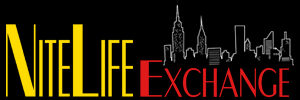
By Marilyn Lester***When Leonard Cohen passed away in 2016 at the age of 82 he left a prodigious body of work. And what didn’t he tackle thematically! So when it came to developing her show, Back on Boogie Street—Songs of Leonard Cohen, at Pangea, actress-vocalist Gay Marshall’s job to laser in on a mere 16 songs must have been daunting. What emerged was peerless. Marshall’s selections and the minimal narrative that set them up brought Cohen to life with a deep understanding of the man and his work.
 Cohen’s work as a musician didn’t begin until 1967, though, after two decades as a poet and novelist—yet his work continued to be poetic in all of his lyrics. So, with considerable acting chops as well as prime vocal ability, Marshall’s dual skills brought the material vividly to life. From the Cohen catalog, she chose a representation of songs over the decades. What she did not include was “Hallelujah.” From the number’s origins in 1984, Cohen eventually wrote 80 verses. In its journey as one of the most covered songs in recording history, singers have mixed lyrics and even added their own. So following Cohen’s own feeling that, “I think it’s a good song, but I think too many people sing it,” Marshall sang a few bars with her own lyric about why she wouldn’t sing it. Her humor was engaging, presaging what was to come: Marshall is a fun performer with gravitas. She’s got a ton of energy, positivity and dynamism in her delivery.
Cohen’s work as a musician didn’t begin until 1967, though, after two decades as a poet and novelist—yet his work continued to be poetic in all of his lyrics. So, with considerable acting chops as well as prime vocal ability, Marshall’s dual skills brought the material vividly to life. From the Cohen catalog, she chose a representation of songs over the decades. What she did not include was “Hallelujah.” From the number’s origins in 1984, Cohen eventually wrote 80 verses. In its journey as one of the most covered songs in recording history, singers have mixed lyrics and even added their own. So following Cohen’s own feeling that, “I think it’s a good song, but I think too many people sing it,” Marshall sang a few bars with her own lyric about why she wouldn’t sing it. Her humor was engaging, presaging what was to come: Marshall is a fun performer with gravitas. She’s got a ton of energy, positivity and dynamism in her delivery.
Launching into the set, Marshall was on “Boogie Street,” a 2001 tune written with Sharon Robinson. Several of Cohen’s songs with singer-songwriter Robinson were represented. She’d toured with him in 1979/80 and again from 2008 to 2013. In between they wrote one of Cohen’s  biggest hits, “Everybody Knows” and the equally popular “A Thousand Kisses Deep.” Going back to the beginning, several 1967 numbers were represented in the set, including Marshall’s closer, “Hey That’s No Way to Say Goodbye,” about lovers separating—one of his many, many songs about relationships.
biggest hits, “Everybody Knows” and the equally popular “A Thousand Kisses Deep.” Going back to the beginning, several 1967 numbers were represented in the set, including Marshall’s closer, “Hey That’s No Way to Say Goodbye,” about lovers separating—one of his many, many songs about relationships.
Cohen wrote about the gamut of human existence, including loss and death, religions, isolation, depression, politics and more. Plagued with depression most of his life, Marshall learned that Cohen was “depressed but not depressing.” “Almost Like the Blues” and “The Future” are two dark tunes, while “Democracy Is Comin’ to the USA,” written in 1992, is prescient, a number that could have been written today. On the lighter side was “That Don’t Make It Junk,” written with Robinson in 2001. Through the entire gamut of Cohen, Marshall in her vocal dynamics, musicality, phrasing and timing proved herself a magnificent interpreter of the canon.
 Marshall was backed by two outstanding musicians in Back on Boogie Street. Bassist Don Falzone provided solid support throughout. His solo accompaniment to “Almost Like the Blues” added superb texture and intensity to the number. On piano was the virtuosic Ross Patterson, whose skill in arranging brings musical energy to any given piece. He also unfailingly has the ability to make one instrument sound like many more, if not a full orchestra.
Marshall was backed by two outstanding musicians in Back on Boogie Street. Bassist Don Falzone provided solid support throughout. His solo accompaniment to “Almost Like the Blues” added superb texture and intensity to the number. On piano was the virtuosic Ross Patterson, whose skill in arranging brings musical energy to any given piece. He also unfailingly has the ability to make one instrument sound like many more, if not a full orchestra.
Photos by Marilyn Lester








